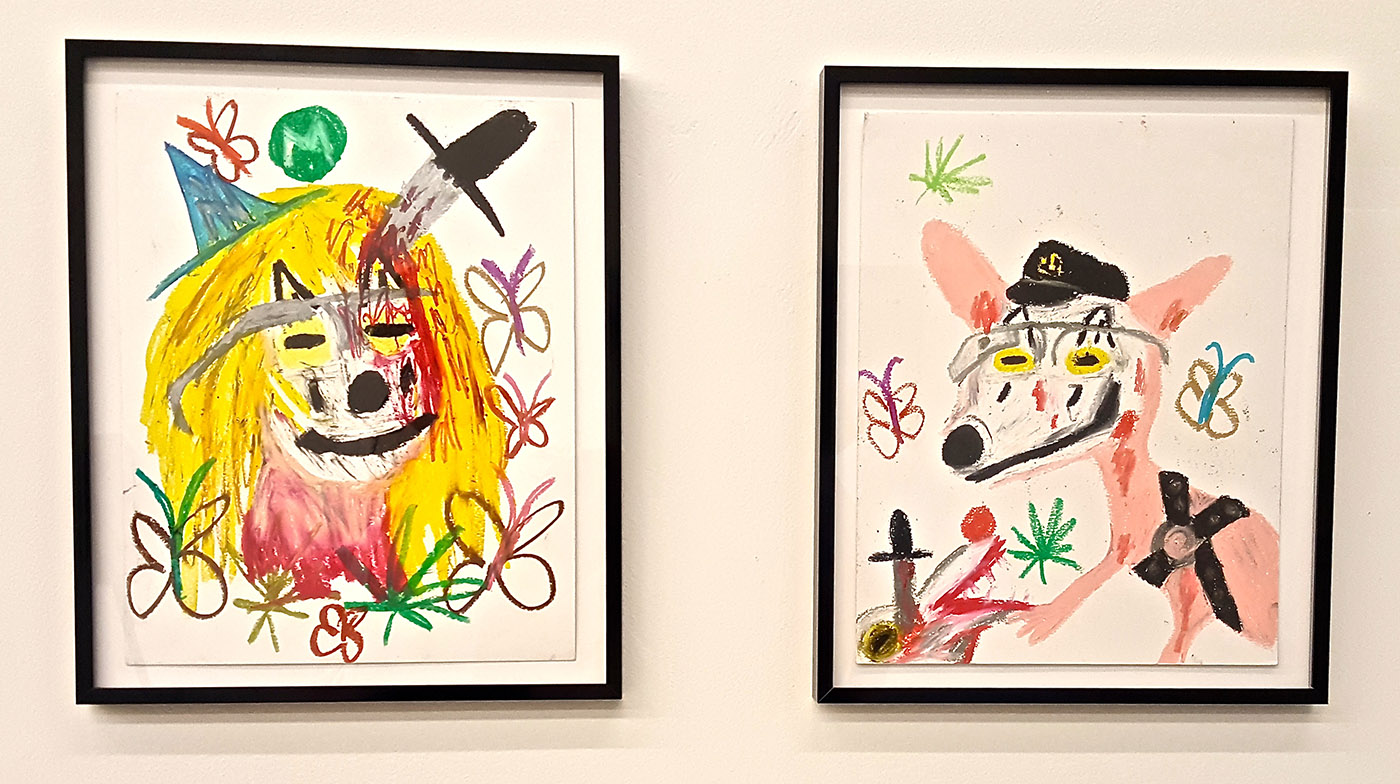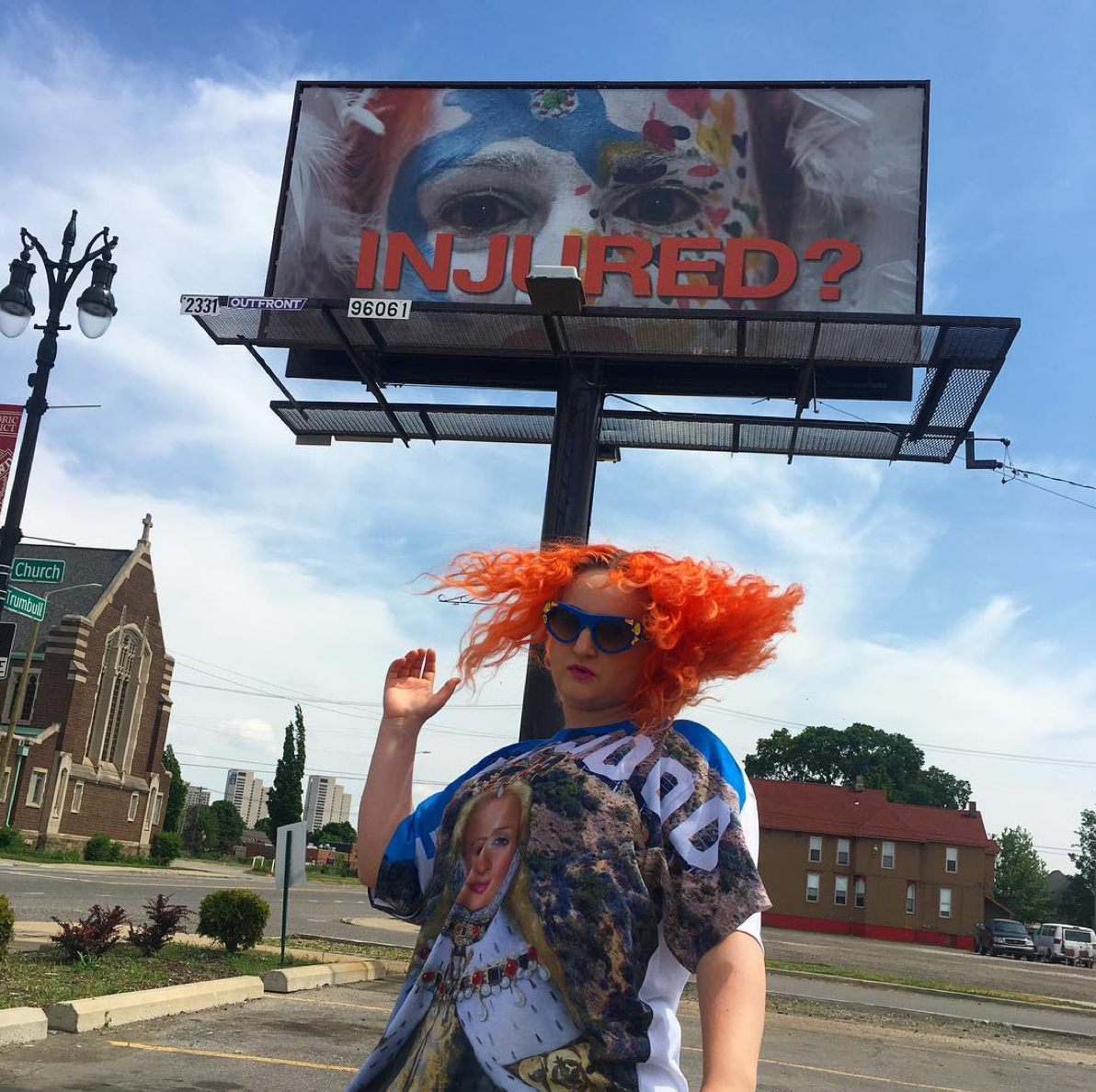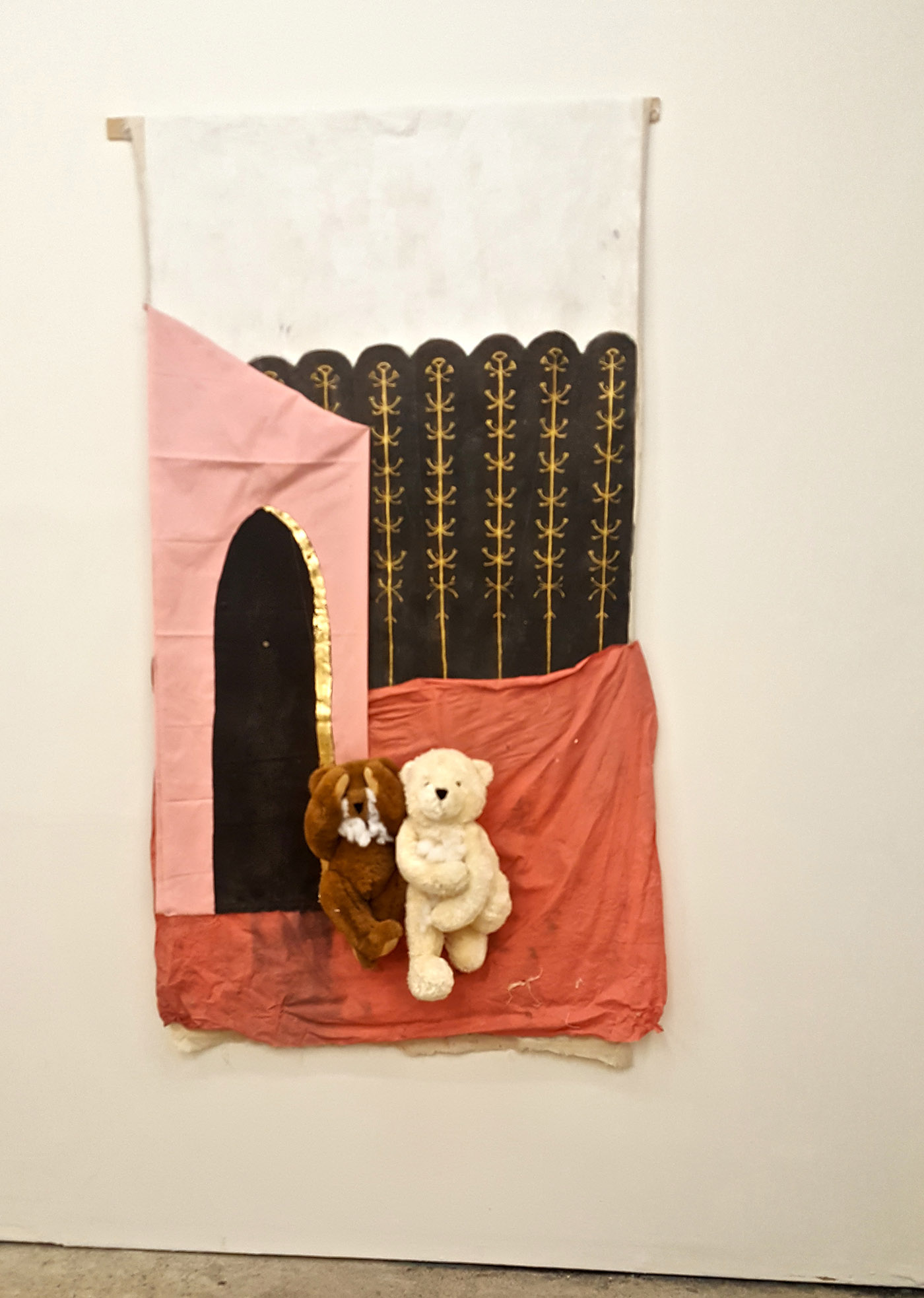
What Pipeline asks ‘Ever get the feeling we’re not alone in this world?’
Above: Two oil pastel works on paper by Bailey Scieszka. Photo by Rosie Sharp.
What Pipeline, a small gallery space on Detroit’s Southwest side, has made its reputation with strong curatorial vision, presenting a mix of local and non-local artists. While many galleries either represent Detroit Metro artists in their own environment, or else exclusively bring outside perspectives to town, What Pipeline is facilitating a healthy exchange of ideas, interspersing local talent with a wider set of interlocutors, as well as “expanding the narrative of the city’s creative talent by publishing a series of art books on Detroit-based artists past and present,” with the support of a $15,000 Knight Arts grant.
After a vibrant series of recent installations by New York-based Olivia Erlanger and artist Paul Pascal Theriault, respectively, What Pipeline included a local cohort with its latest offering: a group show featuring Metro Detroit notables like Bailey Scieszka, Dylan Spaysky and Leif Ritchey. The show, titled “Ever get the feeling we’re not alone in this world?,” opened on Friday, June 3, with a massive crowd spilling over into the surrounding parking lot—which is certainly one answer to the show’s eponymous question.

Bailey Scieszka poses in front of her billboard. Image courtesy of the artist.
An enigmatic billboard at Michigan and Trumbull, a collaborative work between Scieszka and Oto Gillen, promotes the show via an image of Scieszka’s alter ego, Old Put the Clown. “INJURED?” the billboard’s caption reads, along with a cross-section of clown face. Performances by Scieszka, Lindsay Karty, and others will be a part of programming for this exhibition, with a schedule of events still forthcoming.
The work in the show is unified by a sense of inside joking and aesthetic primitivism—but as with much of the contemporary art being produced in Detroit at the moment, the lack of sophistication of the objects on display feels highly conscientious. A series of rough masks in canvas, muslin and burlap by Matthew Luther and wicker heads bearing crude wigs by Spaysky suggest a clandestine assembly of some kind; the only other object on their plinth is a hairbrush, bristles down. The back bears the message “HELP SARA” in rough hand-lettering. The work, by Luther, is titled “Finger.”
I have argued in the past that whimsy is weirdness being defanged, but the objects currently on display at What Pipeline recast whimsy in a twisted light. Just as Scieszka’s clowning pushes a typically playful archetype in the direction of nightmare, her three oil pastel-on-paper works demonstrate a dark imagination rendered in cheerful colors and a childish style of freehand drawing. Untitled stoneware shapes by Crystal Palmer sprout from the floor like cartoonish toadstools, but these stop short of glossy, amusement park-type props—more suggestive of a ritual gathering than a tea party. Her website refers to these forms as “meditation cushions.” Artist Maddie Kuzak embellishes a child’s bike helmet with plaster and wire, to form a kind of crude bunny headdress—part “Donnie Darko,” part Hieronymus Boschian masquerade. The work is titled, “Brad.” A piece by Jen Wang, “Expelled,” features two teddy bears, the dimensional subjects of a fabric tableau that suggests a pink circus tent, and a black fence with detailed embroidery.

Jen Wang, “Expelled.” Photo by Rosie Sharp.
In a 1991 interview with famed gallerist Ralph Rugoff, titled “Dirty Toys,” artist Mike Kelley suggested that, “Because dolls represent such an idealized notion of the child, when you see a dirty one, you think of a fouled child… To parents the doll represents a perfect picture of the child—it’s clean, it’s cuddly, it’s sexless, but as soon as the object is worn at all, it’s dysfunctional.” As young versions of ourselves, we are not able to be “normal,” because as children we lack the perspective to know what “normal” is—if normalcy is really anything more than an abstract idea imposed to control behavior. Some among us learn these signifiers of normalcy early and embrace them; artists, as a rule, do not. Scieszka’s pastels would not be out of place on a child’s drawing table, despite their somewhat disturbing content. People, even young people, can be violent, disturbed or simply graphic in their experience of reality. In truth, worn out toys do not represent dysfunction; they represent investment on the part of their user.
There is a sense that this show calls to people for whom it is difficult and deeply alienating to imagine a place within the world as presented through the normative media of mainstream society—TV news, blockbuster movies and situation comedies. In this respect, it is a Detroit-flavored show, indeed. Likewise, those more “normal” types might find the works on display at What Pipeline to be aggressive and disorienting. But for those of us who fall to the outside of the lines drawn by society, for those perhaps injured by a world whose parameters for success and realization are drawn too narrowly to make a good fit, there is some comfort to be found in the fleeting feeling that perhaps we, the fundamentally weird, are not alone in this world, after all.
Recent Content
-
Artsarticle ·
-
Artsarticle ·
-
Artsarticle ·

